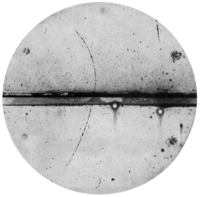
Photo from wikipedia
Design and synthesis of efficient photocatalysts for hydrogen production via water splitting are of great importance from both theoretical and practical viewpoints. Many metal-based semiconductors have been explored for this… Click to show full abstract
Design and synthesis of efficient photocatalysts for hydrogen production via water splitting are of great importance from both theoretical and practical viewpoints. Many metal-based semiconductors have been explored for this purpose in recent decades. Here, for the first time, an entirely carbon-based material, bulk three-dimensionally cross-linked graphene (3DG), has been developed as a photocatalyst for hydrogen production. It exhibits a remarkable hydrogen production rate of 270 μmol·h−1·gcat−1 under full-spectrum light via a hot/free electron emission mechanism. Furthermore, when combined with the widely used semiconductor TiO2 to form a TiO2/3DG composite, it appears to become a more efficient hydrogen production photocatalyst. The composite achieves a production rate of 1,205 μmol·h−1·gcat−1 under ultraviolet–visible (UV–vis) light and a 7.2% apparent quantum efficiency at 350 nm due to the strong synergetic effects between TiO2 and 3DG.
Journal Title: Nano Research
Year Published: 2017
Link to full text (if available)
Share on Social Media: Sign Up to like & get
recommendations!